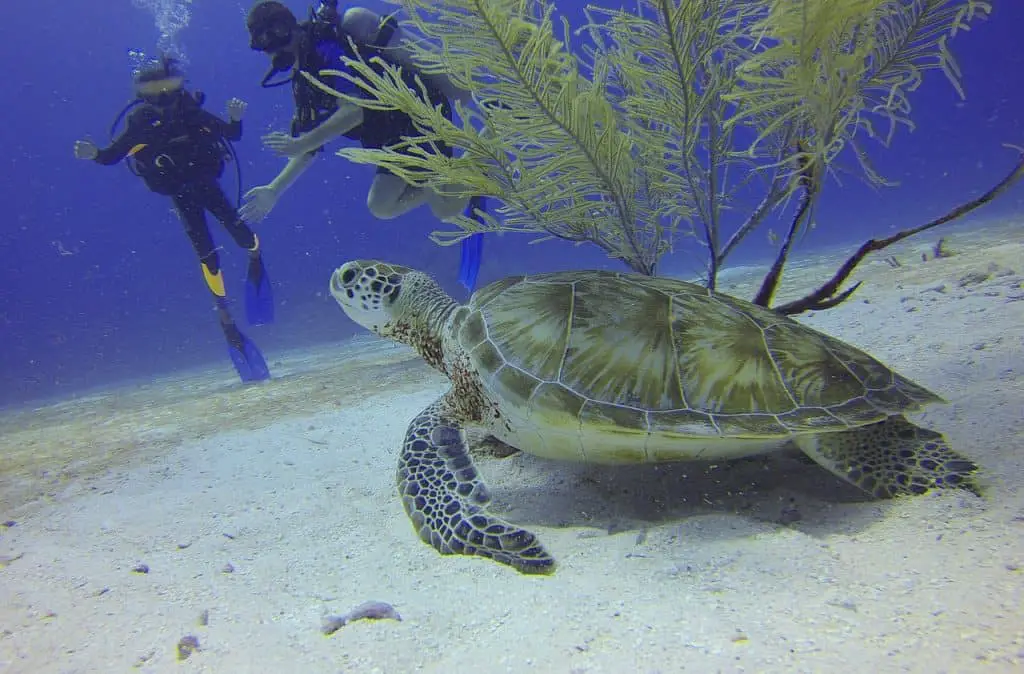The natural world is full of marvels, and one of its most intriguing creatures is the turtle. With their slow and steady demeanor, turtles have captivated the human imagination for centuries. However, one question continues to pique curiosity: Do turtles have gills?
Turtles do not have gills but breathe air using their lungs. Sea turtles have lungs located under their carapace and vertebral column. They use muscles attached to their pelvic and shoulder girdles and plastron to breathe.
Turtles and Their Respiratory System
Contrary to popular belief, turtles do not have gills. Instead, they possess a unique respiratory system that enables them to extract oxygen from the air, similar to mammals and birds. Turtles rely on lungs, which are located underneath their carapace (the upper part of their shell) and vertebral column. These lungs serve as the main organ for respiration, facilitating the exchange of oxygen and carbon dioxide.

Breathing Techniques: Buccal Pumping
While turtles use lungs for respiration, their breathing technique is far from ordinary. They employ a remarkable method called buccal pumping, which involves the movement of muscles attached to their pelvic and shoulder girdles, as well as the plastron (the lower part of their shell).
By contracting and relaxing these muscles, turtles create a pressure gradient that facilitates the flow of air in and out of their lungs. This intricate process ensures a constant supply of oxygen and allows turtles to control their respiration rate based on their activity level and environmental conditions.
The Cloaca: A Multifunctional Organ
Although turtles lack gills, they possess an intriguing anatomical feature known as the cloaca. The cloaca is a common opening for the reproductive, urinary, and gastrointestinal tracts. While its primary purpose is waste elimination and reproduction, some turtle species exhibit a gill-like structure within the cloaca that aids in respiration.
This gill-like structure allows turtles to absorb oxygen from the water when necessary. For instance, during hibernation, when turtles may spend long periods underwater, the cloaca assists in extracting dissolved oxygen. However, it’s important to note that this method is not the primary means of respiration for turtles and is utilized in specific circumstances.
Debunking the Myth of Gills
The misconception that turtles have gills may stem from their ability to remain submerged for extended periods without coming up for air. While turtles are known for their impressive breath-holding capabilities, this is a result of their efficient lung capacity and their unique adaptations rather than the presence of gills.
Turtle Respiration: An Adaptation to Diverse Environments
Turtles have successfully adapted to a wide range of environments, from freshwater lakes to salty oceans and from tropical rainforests to arid deserts. Their ability to breathe air has played a significant role in this adaptability.
Whether they are basking under the sun on a riverbank or gliding gracefully through the depths of the ocean, turtles have evolved an intricate respiratory system to support their survival in different habitats.
Conclusion
In conclusion, turtles do not possess gills but rely on lungs for respiration. Their unique breathing technique, buccal pumping, sets them apart from other animals and allows them to thrive in diverse environments. While turtles have a gill-like structure within their cloaca, it serves as a secondary method of respiration and is only utilized under specific circumstances.




Leave a Reply